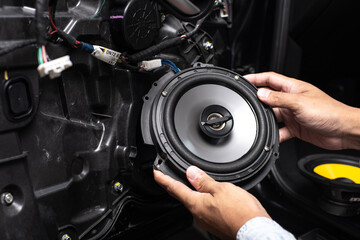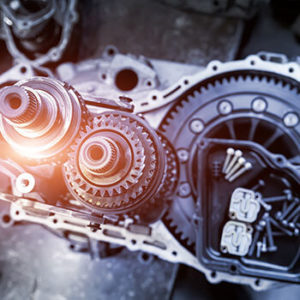If you’re struggling to get your car radio to work, there are a few things you can try. One of the most common reasons for car audio failure is blown fuses. It’s important to check your fuse regularly and replace any blown ones. However, if the problem persists, you may need to call in an expert.

A car audio system is a collection of components that provide sound to the driver and passengers in a vehicle. Car Audio comprises a head unit that sends the audio signal, an amplifier that amplifies it, and speakers that produce the sound. Other features of the system make it easier for drivers to access their infotainment and navigation systems, stream music, and watch videos on an in-dash display.
A blown fuse means the wire element has melted or burned from higher electrical current. Most cars have a fuse box under the hood or near the dash. The fuses are color-coded and have numbers that represent their amp rating. If you can, pull out the fuse with a car fuse puller or needle-nose pliers.
If you can’t pull the fuse, use a multimeter or test light to check its condition. If the fuse has a reading of over 5 O (Ohms), it’s likely blown and will need to be replaced. Fuses in vehicles are usually glass or ceramic tubes fitted with metal end caps that protect the fuse wire from damage when it blows. A blown fuse will look black inside or have broken filaments, so you can see it easily using a flashlight.
Check the Wiring Harness. The wiring harness in your car is the bundle of electrical wires that helps power all the electronics in your car. A damaged wiring harness can affect your car’s overall functionality and performance. If you’re installing a new stereo in your vehicle, it’s important to make sure the wiring is properly connected. That means getting a harness made specifically for the make and model of your vehicle. Prose and test each wire in your wiring harness using a meter to find which one has 12V constant power. If you can’t locate it, use your meter to find the ground wire for the harness. This should be a black wire.
Inspect the Speakers. When your speakers start to break down or stop working altogether, it’s important to test them to determine which ones are damaged and need replacement. To test them, you need a multimeter and a 9V battery.
First, you should disconnect the speaker wires from the amplifier and check each one independently. If they show continuity between the amp and each speaker (or at least on one end of the wire) then that’s a good sign of a problem with the connection rather than the speaker. Next, you can test the speaker by removing its cover and connecting it to a 9V battery. If the cone moves, that is a sign that the speaker is working properly.
Inspect the Amplifier. The amplifier is an electronic device that magnifies and controls audio signal sources from built-in AM-FM receivers, external CD players, and tape players. It then outputs the audio signal to speakers and other equipment. Amplifiers are a critical component in any car audio system. When they go wrong, they can affect your enjoyment of your favorite music.
If you’re experiencing a problem with your amp, diagnosing its cause first before repairing it is important. There are many electrical issues that can impact a amplifier, so you need to know how to test it and identify what the problem is before you start your repair process. One of the easiest ways to test your amp is using a multimeter. Set your multimeter to DC voltage and place the multimeter probes on the input wires you identified earlier.
Inspect the Head Unit. The head unit is a critical part of the car audio system and is the brain that drives your sound. It operates every audio source in your vehicle including a radio, CD player and even over-the-air broadcasts. It is also responsible for controlling the overall volume of your car’s audio system. A higher-end head unit can even provide tone controls and a built-in equalizer to shape the sound.
When preparing to do car audio repair, it is important to check that the head unit’s wiring harness is connected securely and there is no rust on the ground connections. This is a common cause of stereo problems and should be fixed before reinstalling the stereo.
